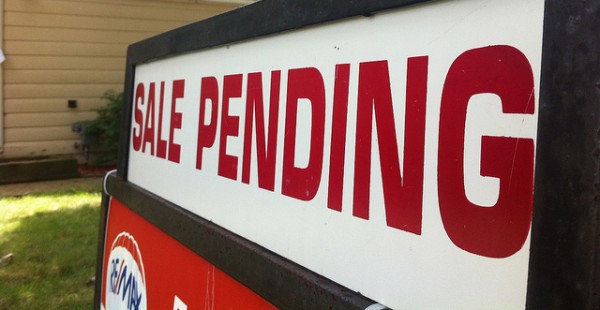Economic Snapshot: New home sales down from March, up year-over-year

Though new home sales dipped this month, sales are still over 5 percent above the 2015 rate.
New home sales
Sales of new single-family houses were at a seasonally adjusted annual rate of 511,000 in March. This is 1.5 percent below the revised February rate of 519,000 but is 5.4 percent above the March 2015 estimate of 485,000.
The median sales price of new houses sold in March 2016 was $288,000 and the average sales price was $356,200. The seasonally adjusted estimate of new houses for sale was 246,000 at the end of March. This represents a supply of 5.8 months at the current sales rate.
Consumer confidence
Consumer confidence declined in April to 94.2, down from 96.1 in March. The Present Situation Index increased from 114.9 to 116.4, while the Expectations Index decreased from 83.6 to 79.3.
Consumers saying business conditions are “good” decreased from 24.9 percent to 23.2 percent. However, those saying business conditions are “bad” also declined from 19.2 percent to 18.1 percent. Consumers claiming jobs are “plentiful” decreased from 25.4 percent to 24.1 percent; however, those claiming jobs are “hard to get” also declined from 25.2 percent to 22.7 percent.
The percentage of consumers expecting business conditions to improve over the next six months decreased from 14.7 percent to 13.4 percent, while those expecting business conditions to worsen rose from 9.5 percent to 11.0 percent.
Those anticipating more jobs in the months ahead decreased from 13.0 percent to 12.2 percent and those anticipating fewer jobs increased from 16.3 percent to 17.2 percent. The proportion of consumers expecting their incomes to increase declined from 16.9 percent to 15.9 percent; however, the proportion expecting a reduction in income also declined from 12.3 percent to 11.2 percent.
GDP
Real gross domestic product increased at an annual rate of 0.5 percent in the first quarter of 2016, according to the “advance” estimate released by the Bureau of Economic Analysis. In the fourth quarter, real GDP increased 1.4 percent.
The increase in real GDP reflected positive contributions from personal compensation expenditures (PCE), residential fixed investment, and state and local government spending that were partly offset by negative contributions from nonresidential fixed investment, private inventory investment, exports and federal government spending. Imports, which are a subtraction of GDP, increased.
The advance estimate released today is based on source data that are incomplete or subject to further revision by the source agency.




